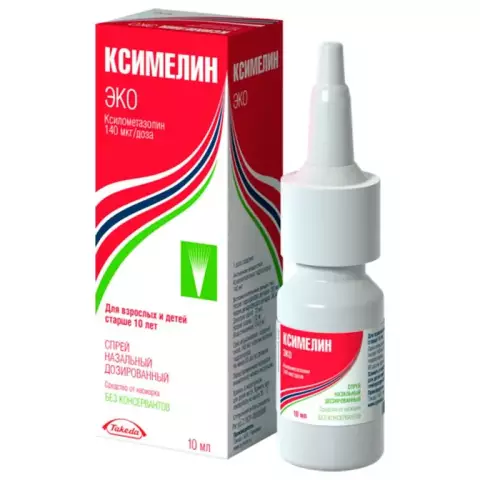- Author Rachel Wainwright [email protected].
- Public 2023-12-15 07:39.
- Last modified 2025-11-02 20:14.
Hikontsil
Instructions for use:
- 1. Pharmacological action
- 2. Release form
- 3. Indications for use
- 4. Contraindications
- 5. Method of application
- 6. Side effects
- 7. Drug interactions
- 8. Storage conditions

Hikontsil is a semi-synthetic antibiotic penicillin used to treat a wide range of diseases.
pharmachologic effect
The active ingredient Hikontsila has a wide spectrum of bactericidal action, which makes it possible to use it for the treatment of many diseases. As a result of the use of Hikontsil, the synthesis of peptidoglycan, which occurs during the period of division and growth, is disrupted, which entails the death of bacteria.
Release form
Hikontsil is produced in the form:
- Capsules with an active substance content of 250 and 500 mg;
- Powder for preparation of suspension for oral administration, 5 ml of which contains 125 and 250 mg of active substance.
The following medicines are analogs of Hikontsil:
- According to the active substance - Amoxicillin, Ospamox, Ecobol, Amosin and Gramox-D;
- By the mode of action - Ampicillin, Standacillin, Ampicillin-Ferein.
Indications for the use of Hikontsil
According to the instructions, Hikontsil is prescribed for the treatment of bacterial infections caused by pathogens sensitive to the drug, namely:
- ENT organ infections - sinusitis, tonsillitis, pharyngitis, acute otitis media;
- Respiratory tract infections - bronchitis, pneumonia;
- Infections of the genitourinary system - pyelitis, pyelonephritis, urethritis, cystitis, endometritis, gonorrhea, cervicitis;
- Gastrointestinal tract infections - dysentery, salmonellosis, salmonella carriage;
- Infections of soft tissues and skin - impetigo, erysipelas, secondarily infected dermatoses;
- Leptospirosis;
- Abdominal infections - cholangitis, peritonitis, cholecystitis;
- Lyme disease;
- Listeriosis;
- Sepsis;
- Meningitis.
In addition, Hikontsil is effective for the prevention of endocarditis.
Contraindications
According to the instructions, Hikontsil is contraindicated to use in case of hypersensitivity to the active or auxiliary components of the drug, as well as to other penicillins, carbapenems and cephalosporins. Also, Hikontsil is not used during lactation.
With caution, Hikontsil should be prescribed for:
- Polyvalent hypersensitivity to xenobiotics;
- Pregnancy;
- Diseases of the gastrointestinal tract in history (especially with colitis associated with the use of antibiotics);
- Infectious mononucleosis;
- Renal failure.
Method of application of Hikontsil
Hikontsil tablets can be taken with or without food:
- Entirely;
- Divide and chew;
- Dilute in 20 ml of water (to a syrup);
- Dilute in 100 ml of water (to a suspension).
Adults and children from 10 years old, Hikontsil, according to the instructions, are prescribed 0.5 g up to three times a day. In cases of severe infection, the daily dose can be doubled.
For children, Hikontsil is prescribed as a suspension three times a day in doses appropriate for age.
In premature and newborn babies, the dosage of Hikontsil is reduced or increased the time between doses. The course of treatment usually ranges from five to twelve days.
In the treatment of acute uncomplicated gonorrhea, 3 g of Hikontsil are taken once, women are recommended to take the same dose again.
In the treatment of paratyphoid fever, typhoid fever and other acute infectious diseases of the biliary tract and gastrointestinal tract, as well as gynecological infectious diseases, 4 tablets of Hikontsil (500 mg each) are prescribed three times a day.
Treatment of leptospirosis is carried out for 6-12 days at 0.5-0.75 g with a frequency of application four times a day.
With salmonella, the treatment is longer and is two to four weeks in a daily dosage of 3-6 g.
After the disappearance of the clinical signs of the disease, treatment with Hikontsil must be continued for two to three days.
Against the background of chronic diseases or low resistance of the organism, the development of superinfection is possible.
For the prevention of endocarditis, adults are prescribed 3-4 g of Hikontsil per 1 hour before minor surgical interventions. If repeated use of Hikontsil is required, the same dose can be taken after 8-9 hours. The pediatric dosage is usually half the adult dosage.
Against the background of impaired renal function, the interval between doses of Hikontsil should be increased to 12 hours.
When treating mild diarrhea with Hikontsil, it is recommended to avoid antidiarrheal drugs that reduce intestinal peristalsis.
When using Hikontsil in conjunction with estrogen-containing oral contraceptives, if possible, it is necessary to use additional methods of contraception.
Side effects of Hikontsil
Hikontsil, according to reviews, can cause allergic reactions, which most often manifest themselves as:
- Hyperemia of the skin;
- Rhinitis;
- Hives;
- Angioneurotic edema;
- Erythematous rash;
- Conjunctivitis.

The main digestive disorders caused by Hikontsil include diarrhea, change in taste, vomiting, dysbiosis, stomatitis, nausea, glossitis.
The most likely nervous system disorders are depression, insomnia, confusion, dizziness, agitation, anxiety, behavioral changes, peripheral neuropathy, ataxia, and epileptic reactions.
Much less often, according to reviews, Hikontsil causes:
- Arthralgia;
- Fever;
- Exfoliative dermatitis;
- Eosinophilia;
- Pseudomembranous enterocolitis;
- Erythema multiforme exudative.
In addition, when using Hikontsil, according to reviews, the following may develop:
- Anemia;
- Interstitial nephritis;
- Leukopenia;
- Labored breathing;
- Neutropenia;
- Vaginal candidiasis;
- Thrombocytopenic purpura;
- Tachycardia.
When taking high doses of Hikontsil, the following overdose symptoms may appear:
- Nausea;
- Vomiting;
- Violation of water and electrolyte balance;
- Diarrhea.
Drug interaction Hikontsil
Hikontsil should not be used concomitantly with certain drugs in order to avoid the development of unwanted side effects and changes in the therapeutic effect. So, Hikontsil is pharmaceutically incompatible with aminoglycosides, as a result of which they cannot be mixed.
Absorption of Hikontsil according to the instructions:
- Slow down - glucosamine, antacids, laxatives and aminoglycosides;
- Increases - ascorbic acid.
Bactericidal antibiotics, including aminoglycosides, vancomycin, cephalosporins, and rifampicin, have a synergistic effect.
Bacteriostatic drugs such as chloramphenicol, macrolides, tetracyclines, lincosamides and sulfonamides have an antagonistic effect.
In addition, when used simultaneously with other drugs, it should be borne in mind that:
- Hikontsil increases the effectiveness of indirect anticoagulants;
- The concentration of the active components of Hikontsil in the blood is increased by: allopurinol, diuretics, phenylbutazone, oxyphenbutazone and other drugs that block tubular secretion;
- Allopurinol increases the risk of developing a skin rash.
Storage conditions
Hikontsil belongs to a number of prescription antibiotic drugs with a shelf life of up to three years.
Information about the drug is generalized, provided for informational purposes only and does not replace the official instructions. Self-medication is hazardous to health!






